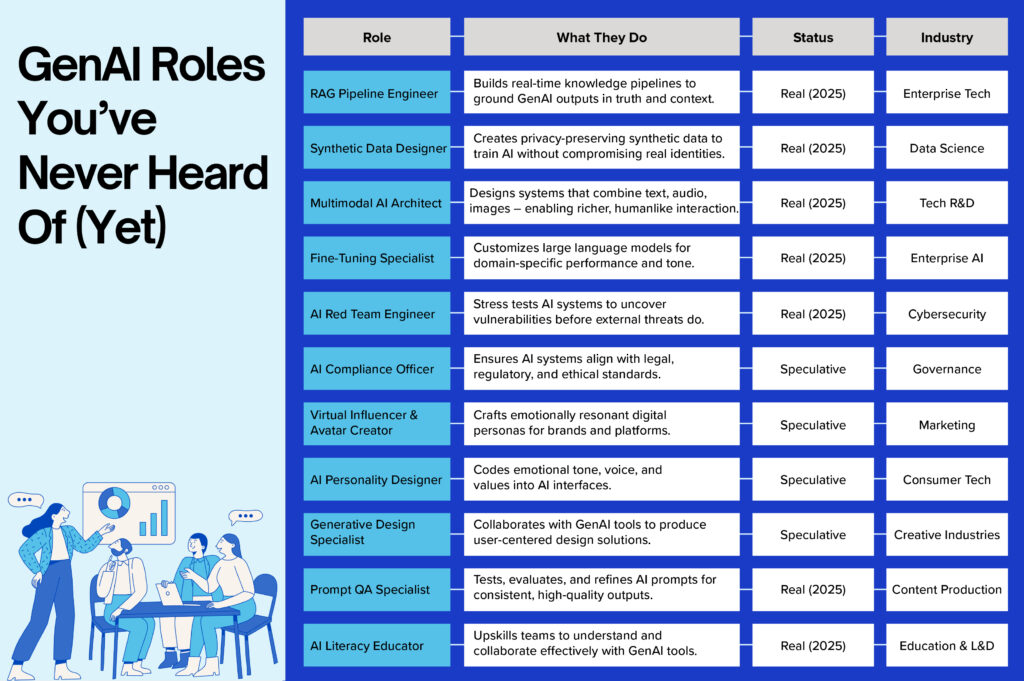
97 million.
That’s how many new jobs the World Economic Forum predicts will emerge by 2025, created not by tradition, but by transformation. By humans and machines working in tandem. By AI.
Sounds exciting? It should also sound alarming.
We’re here now.
And while the world debates AI ethics, hallucinations, and whether ChatGPT-6 is sentient, a quieter, more consequential revolution is underway inside your enterprise.
AI is no longer just enhancing productivity.
It is restructuring work itself.
And here’s the bigger question: Are your leaders even aware these roles exist?
This blog is your field guide to the emerging GenAI-powered workforce, explaining why it matters and highlighting what roles you can’t afford to overlook.
Let’s decode the edge of innovation, starting with the people behind it.
The Rise of the New AI Workforce
A joint study by BCG Henderson Institute and Harvard Business School reveals:
- 89% of executives list AI and GenAI among their top three priorities
- 40 %+ are already seeing tangible performance gains from AI
- And yet, only 6% have begun upskilling their workforce to align with this shift
That’s not just a skills gap. It’s a strategic blind spot.
GenAI is affecting businesses’ operations and transforming their organizational structures. This means new organizational structures, new decision-makers, and new responsibilities emerging at the top.

The C-Suite Is Being Rewritten
Leadership is no longer exempt from fluency in AI. In fact, GenAI is redefining executive roles themselves.
- The CFO is now responsible for AI-augmented forecasting, cost optimization models, and tokenized microtransactions.
- The CHRO is the architect of AI-powered upskilling ecosystems and bias-aware talent frameworks
- The CIO balances real-time AI deployment with responsible innovation, privacy, and cross-functional data orchestration.
- The CSO is tracking generative vulnerabilities across IP, reputation, and misinformation vectors.
Executives are being asked to not just lead change but to interpret and operationalize it.
In short, leaders must become digital linguists who can translate code into culture and models into strategy.
What Now? Build the Workforce Before the Work Evolves
The GenAI economy does not wait for organizational charts to catch up.
It rewards companies that are proactive, precise, and future-aligned.
At VDart, we specialize in identifying the high-impact talent, roles, and roadmaps Fortune companies need to stay ahead. This includes technology, operations, and the executive suite.
Let us help you build the teams of tomorrow, starting today.
Employees of the Gen Z generation look for meaning and purpose in their jobs, not simply a salary. They are drawn to businesses with a distinct mission and core beliefs that coincide with their own.